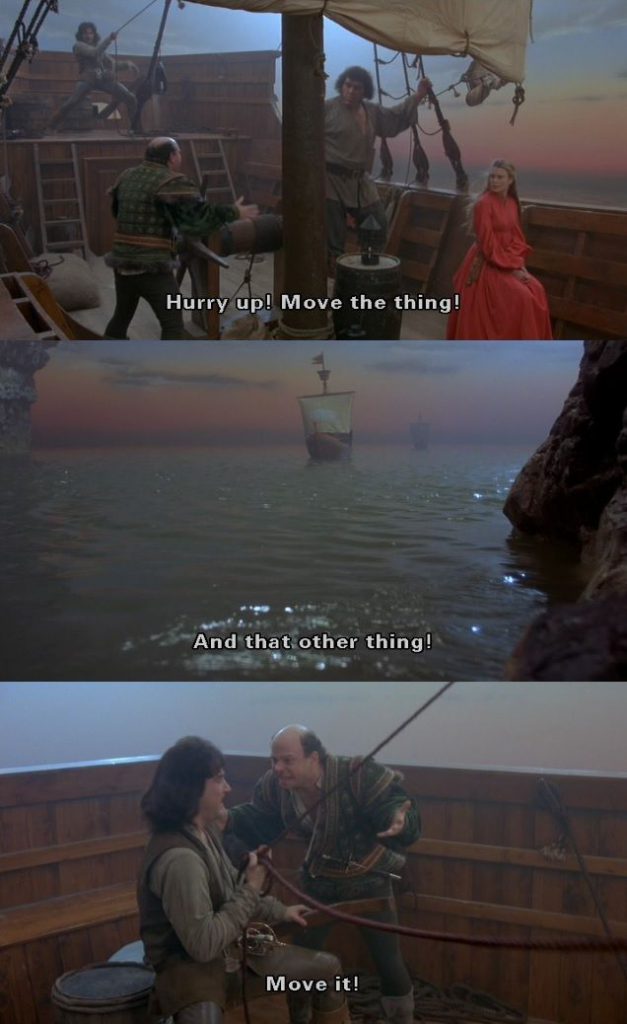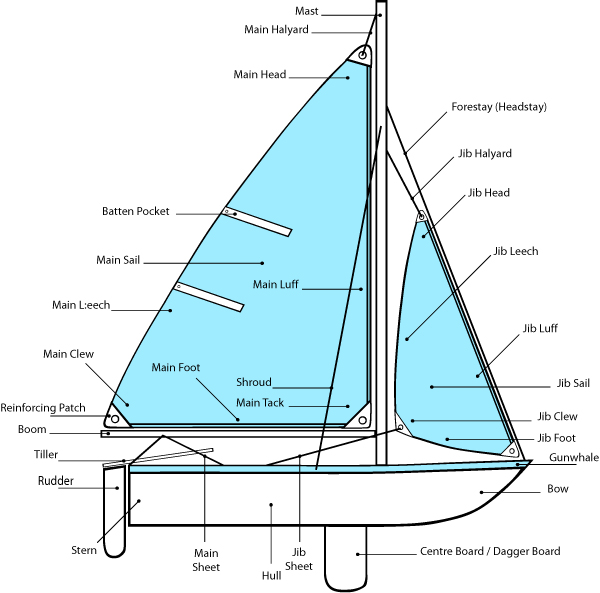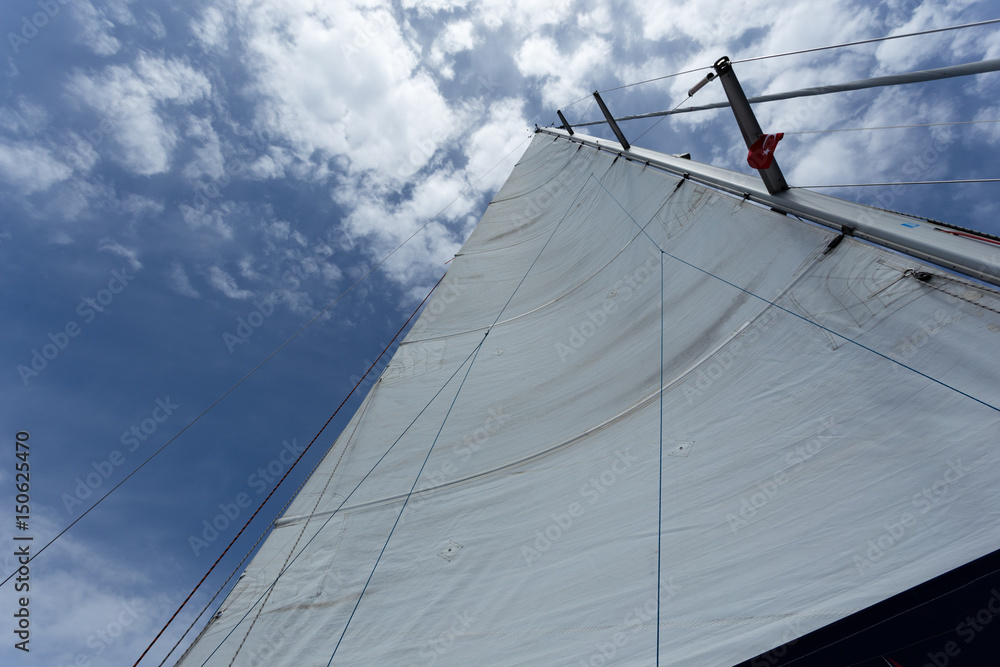Nautical Terminology 101 – Parts of a Sail
July 14th, 2023 by team

by B.J. Porter (Contributing Editor)
Hey New Boaters: a lot of nautical terminology may sound pretentious or unnecessary. And some of it is.
But when things are happening quickly, it’s critical to say the correct thing without fumbling for imprecise words. If you don’t know the word, you’ll be yelling stuff like “Move the thing…and that other thing…move it!” like Vizzini in the Princess Bride. And nobody will know which thing it is you need pulled on, which is not so good in an emergency.

So like the Inuit and their forty-seven words for snow, there’s a reason for the precise word. But sometimes it only becomes apparent when you’ve been talking about it for a while. It’s worth taking the time to learn the language of sailing, so you can jump into a boat with anyone and know what to do.
This is the first installment in a series of basic boating topics we’ll be bringing you over the coming months. While we’ll always do advanced topics, the last few years have seen a big influx of new boaters. So time is right to throw some lines and help them learn.
The format is pretty simple – we’ll take a general sailing and boating topic and zero on in a subtopic, for example “the parts of a sail” or “directions on a boat.” We’ll keep it in smaller manageable chunks which new boaters can digest without rote memorization.
We’ll fill it in with the correct nautical names (as used primarily in North America), as well as adding in any synonyms or words used in other parts of the world. Where it adds value, we’ll throw in history about the name or a mnemonic or two to help remember it all.
We love to encourage participation from more experienced sailors. So if you know or use a different term or have an interesting bit of trivia, lore or an, er, family-friendly mnemonic device to help, please jump in the comments and share.

Parts of a Sail
Although a triangular piece of cloth seems simple, when you’re using it to propel your boat, it becomes important to refer to each section accurately. And sails also have options and extras that aren’t always on every sail.
The Things Every Sail Has

The sides – luff, leech, and foot.
The luff is the edge of the sail which heads into the wind first, the “front,” if you will. Though that can be a little confusing sailing downwind. On a mainsail, the luff attaches to the mast, and on a headsail it attaches to the forestay.
The leech is the back edge, which trails through the wind last.
And the foot is the bottom edge. On headsails, the foot always flies free. Some main sails have a foot track along the boom, though a loose-footed main which attaches to the boom at the tack and clew (see below!) is most common.
The luff of head and mainsails usually have some means of attaching to the mast or forestay. It may be a bolt rope to slide in a track, cars to run on a track, or clips to go around a wire stay.
The corners – head, tack, clew
The top of the sail triangle is the head of the sail. The halyard used to hoist the sail attaches here (we’ll do running rigging next month).
The tack is for forward corner, at the other end of the luff from the head. It is almost always fixed to something. For headsails, the top of a furling drum or a piece of hardware on the deck. The mainsail tack connects to the boom. For some downwind sails, the tack may attach to a fixed line or a sprit.
And the rear corner is the clew. For headsails, the sheets (lines used to control the sail) attach to the clew. On a main, there is an outhaul line to adjust foot tension.
The corners take almost all the load, so all three corners are reinforced at the connection point. Most connections are rings, grommets, or a heavy mesh or rope loops.
Options, Add-ons and Advanced Topics
Depending on how your sail is made, you may have many additional parts on it to help trim, store, set, adjust or change the size and trim of your sails.
{diagram of same main/jib above with battens, leech, roach, tension lines, telltales, reef points/cringles, and a cunningham hole labeled}
Both Sails

Battens are stiff but flexible sticks in the leech of a sail. They stiffen the leech and keep it from fluttering. You may find battens on main and some head sails.
You may have leech lines and foot lines on two of the sail edges. They adjust the tension of those loose edges, and can reduce flutter and change the shape of the sail.
Reef points are a series of reinforced holes in a line across a sail. We use them for reefing, which is reducing the sail area to depower sails in higher winds. Reef points include a clew reef cringle, tack reef cringle, buntlines, and additional reef cringles in the body. A cringle is a grommet in the sail which a line passes through. On the tack and clew cringles, it may be a line to a reefing system, or a line which ties around the boom. The buntlines are short lines used to tie the body of the sail around the boom.
Telltales show the flow of wind along the luff, body, and leech of a sail. They are made from light nylon ribbon or yarn, and colored red for the port side of the sail, and green for the starboard. On a headsail, the sailmaker will install several pairs a short ways back of the luff of the sail. On a main, they may install them near the luff, in the sail body, or single telltales may fly from the leech.
Main Sails Only

A roach is an extra bit of cloth outside the usual triangular shape of a sail. It increases sail area and can help upwind performance. Most sails with roaches also have battens to support the extra cloth.
The Cunningham is a line to adjust tension in the luff of the mainsail. Most mainsails with have a hole through the sail for the Cunningham near the tack, or have a hook, loop, or attachment point for the line.
Check back next month, when we’ll tackle directions on a boat, for hot topics like port, starboard, windward and leeward!
- Posted in Blog, Boat Care, Boating Tips, Cruising, Fishing, iNavX, iNavX: How To, Navigation, News, Reviews, Sailing, Sailing Tips
- No Comments
- Tags: mainsail, sails


Leave a Reply